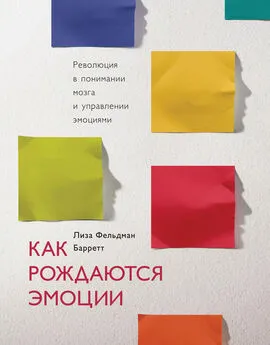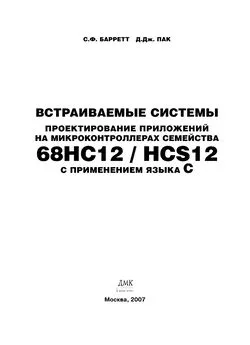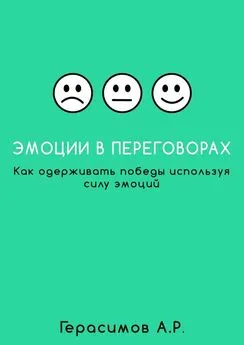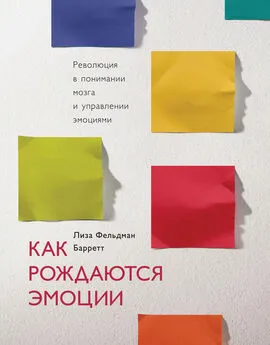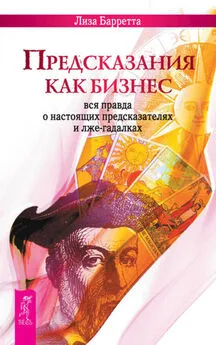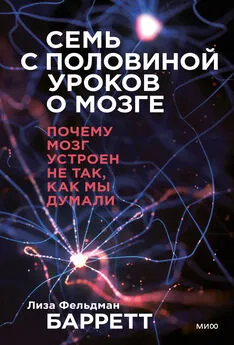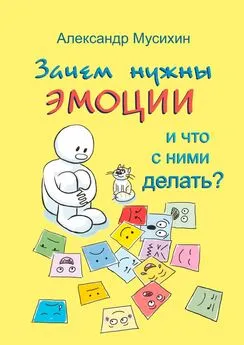Лиза Барретт - Как рождаются эмоции
- Название:Как рождаются эмоции
- Автор:
- Жанр:
- Издательство:Манн, Иванов и Фербер
- Год:2018
- Город:Москва
- ISBN:нет данных
- Рейтинг:
- Избранное:Добавить в избранное
-
Отзывы:
-
Ваша оценка:
Лиза Барретт - Как рождаются эмоции краткое содержание
Эта книга совершает революцию в понимании эмоций, разума и мозга. Вас ждет захватывающее путешествие по удивительным маршрутам, с помощью которых мозг создает вашу эмоциональную жизнь. Вы научитесь по-новому смотреть на эмоции, свои взаимоотношения с людьми и в конечном счете на самих себя. На русском языке публикуется впервые.
Как рождаются эмоции - читать онлайн бесплатно ознакомительный отрывок
Интервал:
Закладка:
Brescoll, Victoria L., and Eric Luis Uhlmann. 2008. “Can an Angry Woman Get Ahead? Status Conferral, Gender, and Expression of Emotion in the Workplace.” Psychological Science 19 (3): 268–275.
Briggs, Jean L. 1970. Never in Anger: Portrait of an Eskimo Family. Cambridge, MA: Harvard University Press.
Broly, Pierre, and Jean-Louis Deneubourg. 2015. “Behavioural Contagion Explains Group Cohesion in a Social Crustacean.” PLOS Computational Biology 11 (6): e1004290. doi:10.1371/journal.pcbi.1004290.
Browning, Michael, Timothy E. Behrens, Gerhard Jocham, Jill X. O’Reilly, and Sonia J. Bishop. 2015. “Anxious Individuals Have Difficulty Learning the Causal Statistics of Aversive Environments.” Nature Neuroscience 18 (4): 590–596.
Bruner, Jerome S. 1990. Acts of Meaning . Cambridge, MA: Harvard University Press.
Bryant, Richard A., Kim L. Felmingham, Derrick Silove, Mark Creamer, Meaghan O’Donnell, and Alexander C. McFarlane. 2011. “The Association Between Menstrual Cycle and Traumatic Memories.” Journal of Affective Disorders 131 (1): 398–401.
Büchel, Christian, Stephan Geuter, Christian Sprenger, and Falk Eippert. 2014. “Placebo Analgesia: A Predictive Coding Perspective.” Neuron 81 (6): 1223–1239.
Buckholtz, Joshua W., Christopher L. Asplund, Paul E. Dux, David H. Zald, John C. Gore, Owen D. Jones, and Rene Marois. 2008. “The Neural Correlates of Third-Party Punishment.” Neuron 60 (5): 930–940.
Buckner, Randy L. 2012. “The Serendipitous Discovery of the Brain’s Default Network.” Neuroimage 62 (2): 1137–1145.
Bullmore, Ed, and Olaf Sporns. 2012. “The Economy of Brain Network Organization.” Nature Reviews Neuroscience 13 (5): 336–349.
Burkett, J. P., E. Andari, Z. V. Johnson, D. C. Curry, F. B. M. de Waal, and L. J. Young. 2016. “Oxytocin-Dependent Consolation Behavior in Rodents.” Science 351 (6271): 375–378.
Burns, Jeffrey M., and Russell H. Swerdlow. 2003. “Right Orbitofrontal Tumor with Pedophilia Symptom and Constructional Apraxia Sign.” Archives of Neurology 60 (3): 437–440.
Bushnell, M. Catherine, Marta Čeko, and Lucie A. Low. 2013. “Cognitive and Emotional Control of Pain and Its Disruption in Chronic Pain.” Nature Reviews Neuroscience 14 (7): 502–511.
Cabanac, M., and J. Leblanc. 1983. “Physiological Conflict in Humans: Fatigue vs. Cold Discomfort.” American Journal of Physiology 244 (5): R621–628.
Cacioppo, John T., Gary G. Berntson, Jeff H. Larsen, Kristen M. Poehlmann, and Tiffany A. Ito. 2000. “The Psychophysiology of Emotion.” In Handbook of Emotions , 2nd edition, edited by Michael Lewis and Jeannette M. Haviland-Jones, 173–191. New York: Guilford Press.
Caldwell-Harris, Catherine L., Angela L. Wilson, Elizabeth LoTempio, and Benjamin Beit-Hallahmi. 2011. “Exploring the Atheist Personality: Well-Being, Awe, and Magical Thinking in Atheists, Buddhists, and Christians.” Mental Health, Religion and Culture 14 (7): 659–672.
Calhoun, Cheshire. 1999. “Making Up Emotional People: The Case of Romantic Love.” In The Passions of Law , edited by Susan A. Bandes, 217–240. New York: New York University Press.
Calvin, Catherine M., G. David Batty, Gordon Lowe, and Ian J. Deary. 2011. “Childhood Intelligence and Midlife Inflammatory and Hemostatic Biomarkers: The National Child Development Study (1958) Cohort.” Health Psychology 30 (6): 710–718.
Cameron, C. Daryl, B. Keith Payne, and John M. Doris. 2013. “Morality in High Definition: Emotion Differentiation Calibrates the Influence of Incidental Disgust on Moral Judgments.” Journal of Experimental Social Psychology 49 (4): 719–725.
Camras, Linda A., Harriet Oster, Tatsuo Ujiie, Joseph J. Campos, Roger Bakeman, and Zhaolan Meng. 2007. “Do Infants Show Distinct Negative Facial Expressions for Fear and Anger? Emotional Expression in 11-Month-Old European American, Chinese, and Japanese Infants.” Infancy 11 (2): 131–155.
Carhart-Harris, Robin L., Suresh Muthukumaraswamy, Leor Rosemana, Mendel Kaelena, Wouter Droog, et al. 2016. “Neural Correlates of the LSD Experience Revealed by Multimodal Neuroimaging.” Proceedings of the National Academy of Sciences 113 (7): 4853–4858.
Caron, Rose F., Albert J. Caron, and Rose S. Myers. 1985. “Do Infants See Emotional Expressions in Static Faces?” Child Development 56 (6): 1552–1560.
Casey, Caroline. 2010. “Looking Past Limits.” TED.com. http://www.ted.com/talks/caroline_casey_looking_past_limits.
Cassoff, Jamie, Sabrina T. Wiebe, and Reut Gruber. 2012. “Sleep Patterns and the Risk for ADHD: A Review.” Nature and Science of Sleep 4: 73–80.
Centers for Disease Control and Prevention. 2015. “Prescription Opioid Analgesic Use Among Adults: United States, 1999–2012.” http://www.cdc.gov/nchs/products/databriefs/db189.htm.
Ceulemans, Eva, Peter Kuppens, and Iven Van Mechelen. 2012. “Capturing the Structure of Distinct Types of Individual Differences in the Situation-Specific Experience of Emotions: The Case of Anger.” European Journal of Personality 26 (5): 484–495.
Chanes, Lorena, and Lisa Feldman Barrett. 2016. “Redefining the Role of Limbic Areas in Cortical Processing.” Trends in Cognitive Sciences 20 (2): 96–106.
Chang, Anne-Marie, Daniel Aeschbach, Jeanne F. Duffy, and Charles A. Czeisler. 2015. “Evening Use of Light-Emitting eReaders Negatively Affects Sleep, Circadian Timing, and Next-Morning Alertness.” Proceedings of the National Academy of Sciences 112 (4): 1232–1237.
Chang, Luke J., Peter J. Gianaros, Stephen B. Manuck, Anjali Krishnan, and Tor D. Wager. 2015. “A Sensitive and Specific Neural Signature for Picture-Induced Negative Affect.” PLOS Biology 13 (6): e1002180.
Chao, Linda L., and Alex Martin. 2000. “Representation of Manipulable Man-Made Objects in the Dorsal Stream.” Neuroimage 12 (4): 478–484.
Charney, Evan. 2012. “Behavior Genetics and Postgenomics.” Behavioral and Brain Sciences 35 (5): 331–358.
Chen, Lucy L. 2014. “What Do We Know About Opioid-Induced Hyperalgesia?” Journal of Clinical Outcomes Management 21 (3): 169–175.
Choi, Ki Sueng, Patricio Riva-Posse, Robert E. Gross, and Helen S. Mayberg. 2015. “Mapping the ‘Depression Switch’ During Intraoperative Testing of Subcallosal Cingulate Deep Brain Stimulation.” JAMA Neurology 72 (11): 1252–1260.
Chomsky, Noam. 1980. “Rules and Representations.” Behavioral and Brain Sciences 3 (1): 1–15.
Cisek, P., and J. Kalaska. 2010. “Neural Mechanisms for Interacting with a World Full of Action Choices.” Annual Review of Neuroscience 33: 269–298.
Clark, Andy. 2013. “Whatever Next? Predictive Brains, Situated Agents, and the Future of Cognitive Science.” Behavioral and Brain Sciences 36: 281–253.
Clark-Polner, E., T. Johnson, and L. F. Barrett. In press. “Multivoxel Pattern Analysis Does Not Provide Evidence to Support the Existence of Basic Emotions.” Cerebral Cortex .
Clark-Polner, Elizabeth, Tor D. Wager, Ajay B. Satpute, and Lisa Feldman Barrett. In press. “Neural Fingerprinting: Meta-Analysis, Variation, and the Search for Brain-Based Essences in the Science of Emotion.” In Handbook of Emotions , 4th edition, edited by Lisa Feldman Barrett, Michael Lewis, and Jeannette M. Haviland-Jones, 146–165. New York: Guilford Press.
Clave-Brule, M., A. Mazloum, R. J. Park, E. J. Harbottle, and C. Laird Birmingham. 2009. “Managing Anxiety in Eating Disorders with Knitting.” Eating and Weight Disorders-Studies on Anorexia, Bulimia and Obesity 14 (1): e1–e5.
Clore, Gerald L., and Andrew Ortony. 2008. “Appraisal Theories: How Cognition Shapes Affect into Emotion.” In Handbook of Emotions , 3rd edition, edited by Michael Lewis, Jeannette M. Haviland-Jones, and Lisa Feldman Barrett, 628–642. New York: Guilford Press.
Coan, James A., Hillary S. Schaefer, and Richard J. Davidson. 2006. “Lending a Hand: Social Regulation of the Neural Response to Threat.” Psychological Science 17 (12): 1032–1039.
Cohen, Sheldon, William J. Doyle, David P. Skoner, Bruce S. Rabin, and Jack M. Gwaltney. 1997. “Social Ties and Susceptibility to the Common Cold.” JAMA 277 (24): 1940–1944.
Cohen, Sheldon, William J. Doyle, Ronald Turner, Cuneyt M. Alper, and David P. Skoner. 2003. “Sociability and Susceptibility to the Common Cold.” Psychological Science 14 (5): 389–395.
Cohen, Sheldon, and Gail M. Williamson. 1991. “Stress and Infectious Disease in Humans.” Psychological Bulletin 109 (1): 5–24.
Cole, Steven W., and Anil K. Sood. 2012. “Molecular Pathways: Beta-Adrenergic Signaling in Cancer.” Clinical Cancer Research 18 (5): 1201–1206.
Consedine, Nathan S., Yulia E. Chentsova Dutton, and Yulia S. Krivoshekova. 2014. “Emotional Acculturation Predicts Better Somatic Health: Experiential and Expressive Acculturation Among Immigrant Women from Four Ethnic Groups.” Journal of Social and Clinical Psychology 33 (10): 867–889.
Copeland, William E., Dieter Wolke, Adrian Angold, and E. Jane Costello. 2013. “Adult Psychiatric Outcomes of Bullying and Being Bullied by Peers in Childhood and Adolescence.” JAMA Psychiatry 70 (4): 419–426.
Copeland, William E., Dieter Wolke, Suzet Tanya Lereya, Lilly Shanahan, Carol Worthman, and E. Jane Costello. 2014. “Childhood Bullying Involvement Predicts Low-Grade Systemic Inflammation into Adulthood.” Proceedings of the National Academy of Sciences 111 (21): 7570–7575.
Cordaro, Daniel T., Dacher Keltner, Sumjay Tshering, Dorji Wangchuk, and Lisa M. Flynn. 2016. “The Voice Conveys Emotion in Ten Globalized Cultures and One Remote Village in Bhutan.” Emotion 16 (1): 117–128.
Cosmides, Leda, and John Tooby. 2000. “Evolutionary Psychology and the Emotions.” In Handbook of Emotions, 2nd edition, edited by Michael Lewis and Jeannette M. Haviland-Jones, 91–115. New York: Guilford Press.
Craig, A. D. 2015. How Do You Feel? An Interoceptive Moment with Your Neurobiological Self . Princeton, NJ: Princeton University Press.
Creswell, J. D., A. A. Taren, E. K. Lindsay, C. M. Greco, P. J. Gianaros, A. Fairgrieve, A. L. Marsland, K. W. Brown, B. M. Way, R. K. Rosen, and J. L. Ferris. In press. “Alterations in Resting State Functional Connectivity Link Mindfulness Meditation with Reduced Interleukin-6.” Biological Psychiatry .
Crivelli, Carlos, Pilar Carrera, and José-Miguel Fernández-Dols. 2015. “Are Smiles a Sign of Happiness? Spontaneous Expressions of Judo Winners.” Evolution and Human Behavior 36 (1): 52–58.
Crivelli, Carlos, Sergio Jarillo, James A. Russell, and José-Miguel Fernández-Dols. 2016. “Reading Emotions from Faces in Two Indigenous Societies.” Journal of Experimental Psychology 145 (7): 830–843.
Crossley, Nicolas A., Andrea Mechelli, Jessica Scott, Francesco Carletti, Peter T. Fox, Philip McGuire, and Edward T. Bullmore. 2014. “The Hubs of the Human Connectome Are Generally Implicated in the Anatomy of Brain Disorders.” Brain 137 (8): 2382–2395.
Crum, Alia J., William R. Corbin, Kelly D. Brownell, and Peter Salovey. 2011. “Mind over Milkshakes: Mindsets, Not Just Nutrients, Determine Ghrelin Response.” Health Psychology 30 (4): 424–429.
Читать дальшеИнтервал:
Закладка:
